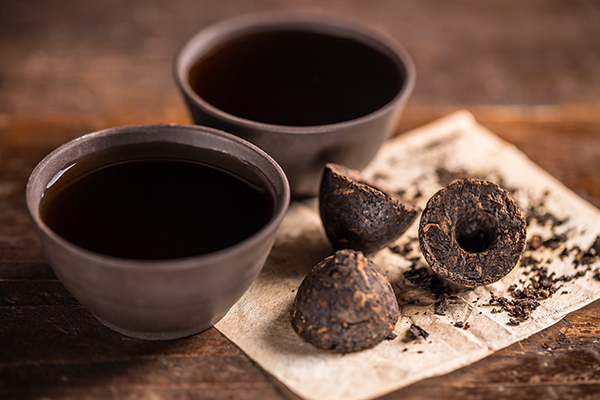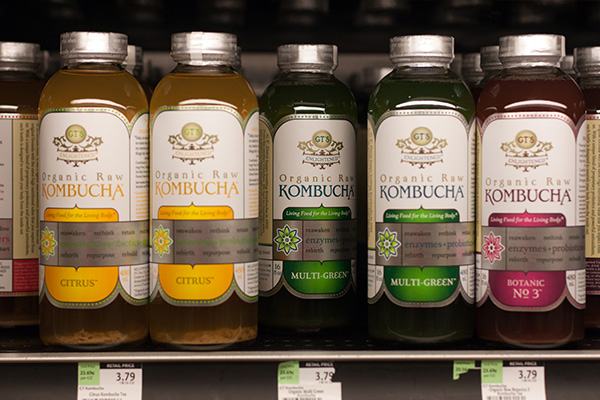Earl Grey Tea 101: Everything There Is to Know
Earl Grey tea, with its distinct citrusy flavor and calming fragrance, has been a cherished staple in tea cupboards around the world. The distinctive tea blend is named after the 19th-century British Prime Minister, Earl Charles Grey.
But what lies behind its unique aroma and flavor? What benefits might this cherished blend offer, and are there any potential side effects to keep in mind?

What Is Earl Grey Tea?
Earl Grey tea is a type of English tea that usually comprises black tea leaves as the primary ingredient. It’s the addition of oil from the rind of bergamot orange, a fragrant citrus fruit native to Italy, that grants Earl Grey its characteristic flavor. This blend results in a tea that offers both the robustness of black tea and the refreshing qualities of citrus.
Varieties of Earl Grey Tea
Earl Grey tea comes in several variations. Traditional Earl Grey uses black tea, but green and oolong teas are also used as a base in some blends, giving rise to Green Earl Grey and Oolong Earl Grey. Some tea brands even produce a decaffeinated version. Each variant has its unique character, but all retain the defining citrus aroma of the bergamot oil.
Earl Grey Tea Benefits
The unique blend of Earl Grey not only results in a distinct and enjoyable tea, but also one that comes with several potential health benefits.
Aids in Digestion
Earl Grey tea is known to aid digestion. The bergamot oil used in the blend can help ease an upset stomach, reduce bloating, and alleviate symptoms of indigestion.
Rich in Antioxidants
Black tea, the most common base for Earl Grey, is high in antioxidants. These antioxidants may help to protect your cells from damage by free radicals, potentially reducing the risk of chronic diseases.
Energy Boost
Like other black teas, Earl Grey contains caffeine. While not as much as in a typical cup of coffee, it’s enough to provide a gentle energy boost without the jittery side-effects often associated with higher-caffeine beverages.
May Promote Dental Health
Interestingly, Earl Grey can also contribute to oral health. The tea contains fluoride, which is beneficial for maintaining healthy teeth and gums.
Earl Grey Tea Side Effects
While Earl Grey tea is generally safe for most people when consumed in moderation, it’s important to be aware of potential side effects.
Potential for Caffeine-Related Effects
Like all caffeinated beverages, overconsumption of Earl Grey tea could lead to caffeine-related side effects such as restlessness, insomnia, and a rapid heartbeat.
Possible Interaction with Certain Medications
The bergamot oil in Earl Grey may interfere with certain medications, such as statins. If you’re taking medication, it’s always advisable to consult with your healthcare provider before adding Earl Grey or any other form of tea to your diet.
Risk of Iron Absorption Interference
Tea, including Earl Grey, contains compounds called tannins. These can interfere with the absorption of iron from foods. Those with iron deficiencies should be aware of this when consuming Earl Grey or other types of tea.
Best Earl Grey Teas
Our team has thoroughly examined the variety of Earl Grey teas on the market, from caffeinated to decaf, loose-leaf to tea bags. Here are the best earl grey teas we have found.
Brewing the Perfect Cup of Earl Grey Tea
A good cup of Earl Grey can be a delightful experience, but brewing it to perfection requires a few key steps:
- Start with fresh, cold water: Always use fresh, cold water for boiling. If your tap water has a strong taste or odor, consider using filtered or bottled water for a cleaner taste.
- Bring the water to a boil: Heat your water until it reaches a rolling boil.
- Let the water cool slightly: Once it’s reached a boil, remove the water from the heat and let it cool for a minute or two. This will bring it to the ideal temperature for brewing black tea, which is typically around 200 degrees Fahrenheit (93 degrees Celsius).
- Add the Earl Grey tea to your cup: Place a tea bag or loose leaf tea in your tea infuser. If you’re using loose tea, a general guideline is to use one teaspoon of tea per cup.
- Pour the hot water over the tea: This helps to ensure the water circulates around the tea leaves or bag, helping to release the flavors.
- Steep the tea: Allow the tea to steep for about 3-5 minutes. If you prefer a stronger tea, let it steep a little longer.
- Remove the tea leaves or tea bag: After the tea has steeped, remove the leaves or bag to prevent over-extraction, which can make the tea taste bitter.
- Enjoy your cup of Earl Grey: Now your Earl Grey tea is ready to enjoy. If you like, you can add a slice of lemon or a splash of milk, but Earl Grey is also delicious on its own.
Following these steps will result in a perfectly brewed cup of Earl Grey tea every time.
What Goes Well With Earl Grey Tea?
Earl Grey tea, with its distinctive bergamot aroma, pairs wonderfully with a variety of foods and flavors.
It complements citrus-infused dishes and desserts like lemon cakes or tarts due to the citrus notes of bergamot. It also pairs well with dark chocolate, where the bitterness of the chocolate balances the citrusy, slightly floral flavor of the tea.
Additionally, it can be enjoyed with traditional English breakfast items like scones, biscuits, and light sandwiches.
Conclusion
Earl Grey tea is more than just a beverage. It’s a cherished blend with a rich history, a distinctive flavor, and potential health benefits. Whether you drink it for the energy boost, the antioxidants, or simply for the soothing citrus aroma, Earl Grey is a wonderful tea to enjoy at any time of the day. However, as with any food or beverage, it’s important to consume it in moderation and be aware of any potential side effects. So, brew yourself a cup, take a moment to appreciate the aroma, and savor the unique taste of Earl Grey tea.
FAQ
What’s the Difference Between Earl Grey and Lady Grey?
Earl Grey tea is traditionally a blend of black tea infused with oil of bergamot, a type of citrus. On the other hand, Lady Grey tea is a variation of Earl Grey tea that has additional citrus flavorings like orange and lemon, making it lighter and fruitier. Here’s a detailed comparison of the two teas.






